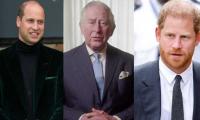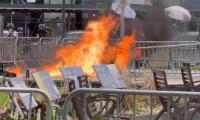Last three general elections, from 2008 to 2018, have changed the political dynamics of Pakistan in the post-Benazir Bhutto era after her tragic end to a long political journey on December 27, 2007. What has really changed in the last 11 years? Will it make parliamentary system and freedom of the press strong? If so, why some circles have fear about its future? How far it is true or false? Has this transition exposed our political elite or resulted in new political realities?
While the PPP after the loss of Benazir Bhutto is still facing a daunting challenge of revival in Punjab and Kyber Pakhtunkhawan, the PML-N in the post-Panama leaks of 2016, faced disqualification and conviction of its leader Nawaz Sharif and lost power in the 2018 elections, other parties which suffered badly include MQM, JUI(F), ANP and Jamaat-e-Islami.
The one party for which these 12 years turn out to be a 'blessing' was the Pakistan Tehreek-e-Insaf, PTI and its leader and now Prime Minister, Imran Khan. His party, from one seat in 2002, now is in power at the Center, in Punjab and KP while in coalition in Balochistan. The last 12 years also saw the rise of a new voting class and political awakening in the youth and more participation among women in particular.
Corruption, which had been an issue since early 90s, become the key issue in the last election and resulted in the exit of two PMs, on different accounts. Though, it is still far from been across the board, yet it would be wrong to discredit the democratic system as after all, it is the same system which had exposed politicians in particular but, the latter rightly raised the question of why only politicians have been the prime target.
So, apparently the democratic system is still in the transitional period and challenging for the party in power and the opposition, who has a challenge before it to reinvent itself from the loss and mistakes. But, the real challenge will be for two institutions, which emerged strong in the past decade but are now facing new challenges i.e. media and judiciary.
The year 2007 was the turning point as it resulted in dramatic changes from the lawyers’ movement to Lal Masjid and from May 12 to Emergency Plus and the year ended with the assassination of former Prime Minister Benazir Bhutto. All this happened in just one year. While it ended a long era of yet another dictator but it also brought an end to one of Pakistan key political leaders, Benazir Bhutto. It also jolted some institutions with the rise of two pillars of the state i.e. judiciary and media.
The two joined hands and challenged Gen Pervez Musharraf in an unprecedented manner, when the judges and lawyers movement become too strong and was later joined by the media. For the first time in 2007, Gen Pervez Musharraf lost his grip on power after he failed in getting the 'resignation' of former Chief Justice of Pakistan Iftikhar Mohammad Choudhry. What gave the then CJP strength to say 'No' is still an unanswered question? In 2001, he was on the bench which in the Zafar Ali Shah case, which declared the Oct 12, 1999, coup, not only legal under the law of necessity, but also allowed Gen Musharraf to amend the Constitution.
Iftikhar Choudhry's ‘No' brought a nerve wave in the anti-Musharraf campaign and for the first time in Pakistan's political history, the judiciary looked strong particularly when in July, 2007, it reinstated the then CJP, and thus sent a strong message about the emergence of an 'independent judiciary.’
Even the emergency on Nov 3, 2007, which also resulted in a ban on the media, judges put under house arrest and new Provisional Constitutional Order (PCO) could not stop the movement. On the contrary, the media joined it with full force along with political support with the return of two mainstream political leaders, who were in exile i.e. Benazir Bhutto and Nawaz Sharif.
Only Musharraf and his close team of advisers, both civilian and non-civilian, know better as how the 'writ of the state' looked so weak under a military ruler. Another event which jolted his power was the 'Lal Masjid' operation against alleged militants. It brought a new wave of terror in the country with a rise in suicide bombings and targeted killings. However, in the last 12 years, a massive countrywide military operation particularly in Swat, South Wazirstan, North Wazirstan, Karachi, Balochistan and finally in Punjab, brought massive decline in militancy.
When Musharraf started losing his grip on power he tried to reconcile with the political leadership in a bid to save his own skin. In a bid to prolong his own rule he looked for a new political partner, which resulted in an NRO with Benazir Bhutto. Many political analysts regarded it as BB's biggest political blunder and those who advised against her included some of her close aides and the Americans.
Though, when Benazir was asked by Musharraf not to return before elections or he would abolish the NRO, she announced her return with or without NRO. There were threats that her life would be in danger if she returned, and it happened.
Her physical removal completely changed the political landscape. Musharraf, who by then had retired as army chief and handed over the military command to his successor, General Ashfaq Parvez Kyani, was still hopeful to continue as President after the 2008 elections.
But, when the army decided to remain 'neutral' in the elections, the message was clear for him and in the end he also lost presidency but, not before an understanding between Asif Ali Zardari and the then establishment that Musharraf would be given a 'safe exit.'
While Mr Zardari and PPP justified Musharraf’s safe exit and exile as its credit to pay the way for democracy in the country, its decision not to reinstate the deposed judges soon after coming to power raised a serious question of a major shift from the stance of Benazir Bhutto.
It led to new political crisis and practically led to the breakup of the Charter of Democracy (COD). It resulted in a new political crisis and saw imposition of Governor's rule in Punjab for a brief period, a ‘long march’ by Sharif and the judges’ restoration after the entry of a 'neutral umpire.'
This new political battle also changed the dynamics of the independent judiciary and resulted in the ouster of Prime Minister Yusuf Raza Gillani, but the parliament completed its term and for the first time power was peacefully transferred from the PPP to the PML-N, from one party to another in the next election.
From 2013 to 2018, we saw rise and fall of the Sharifs but the parliament completed its second consecutive term and power once again transferred from the PML-N to the PTI. So, this is a transition with a lot of challenges particularly for the institutions, which emerged strongly after 2007.
The writer is a senior columnist and analyst of GEO, The News and Jang
Twitter: @MazharAbbasGEO
Saad was of the view that the battle of politics should be fought solely through political means
KP govt decided to develop gemstone business as a formal export sector and cluster at the Namak Mandi would be...
Khyber Pakhtunkhwa Minister for Higher Education, Archives, and Libraries, Meena Khan Afridi. — APP FilePESHAWAR:...
Vehicles and horse carts passing through flood water at Bara Bazar area on Khuwani bridge after heavy rain in Peshawar...
Amid the failure to revive the cash-bleeding PIA, government is left with no other option but to sell it to any...
Picture showing the Silver Jubilee Gate of the University of Karachi. — APP File KARACHI: The University of Karachi...







